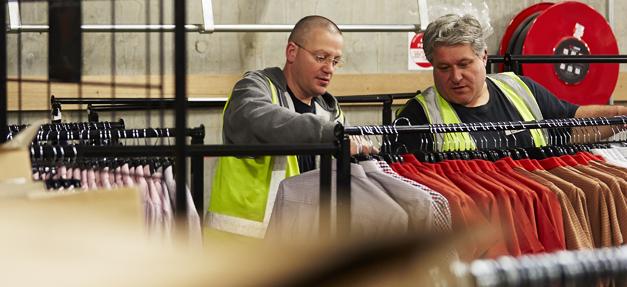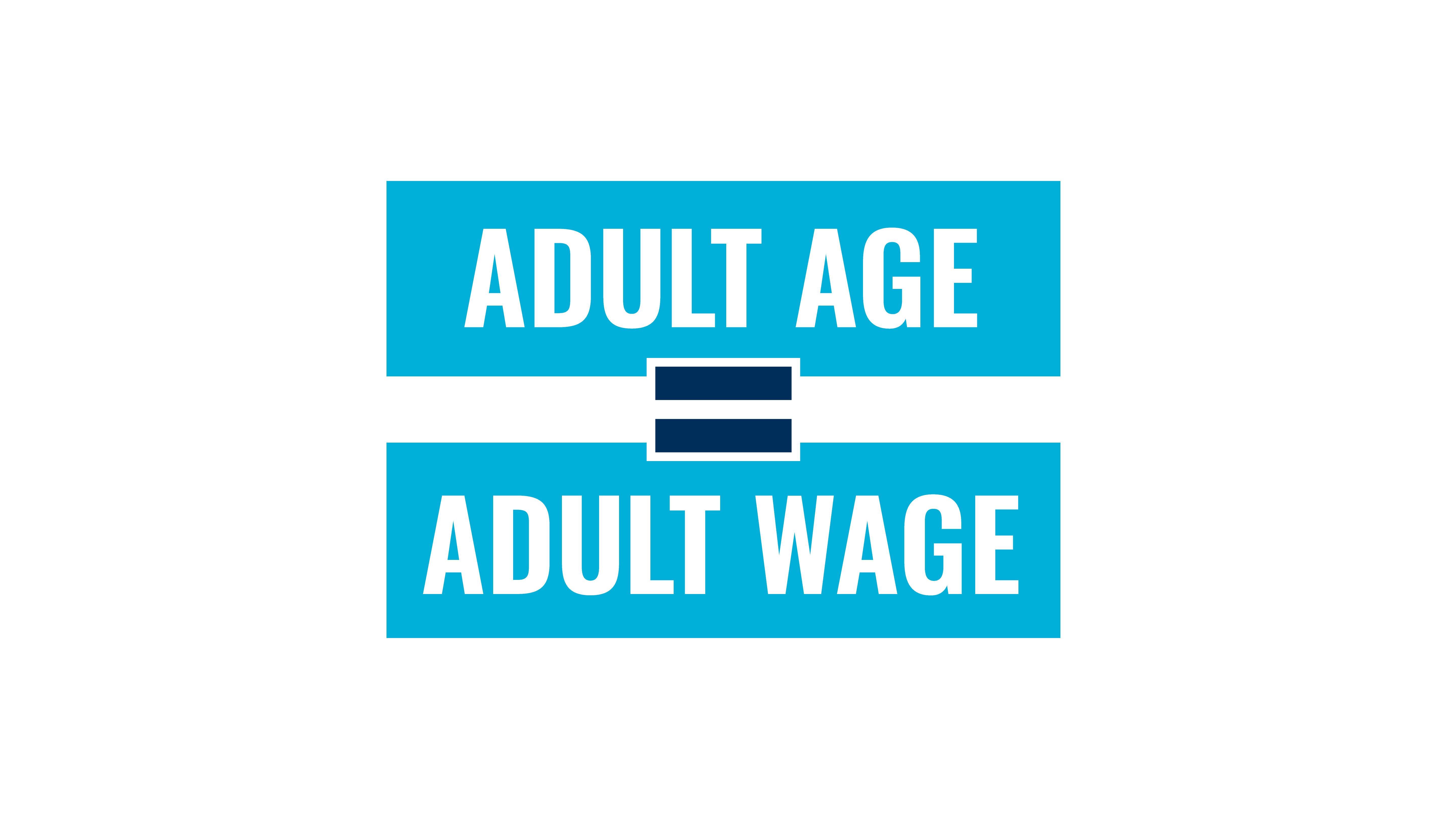Workplace Safety
The workplace can be a dangerous place.
By law, your employer must provide a safe and healthy workplace.
Information in this section is designed to help you be more aware of the risks of injury in the workplace, and the measures you can take to help prevent workplace injuries and accidents.
In this section there is information on:

Manual Handling - Are You at Risk?
Manual handling is a major hazard in the retail, warehousing/distribution and fast food industries, which can often result in injury.
Manual handling laws require your employer to assess your workplace and eliminate or reduce the risk of injury.
Don't wait for your employer to act. If you have any suggestions to prevent manual handling injuries, tell your employer that you would like to be involved and consulted, or contact the SDA.
What are Manual Handling Injuries?
Most employees in the retail, warehousing/distribution and fast food industries perform a variety of jobs throughout their working day, including stock distribution, customer service, checkout operation, warehousing and administration.
Manual handling is more than just lifting. It involves a range of activities including holding, pushing, pulling, carrying and sustained and/or stressful postures.
Many workers experience manual handling injuries during their working lives. The most common manual handling injuries in the retail, warehousing/distribution and fast food industries are:
- Back injuries
- Sprains and strains
- Cuts and lacerations
- Shoulder and arm pain
- Overuse injuries
Injuries can occur as a result of a single event, but can also occur as a result of 'wear and tear' over time.
Risk Factors
There are many workplace risk factors which cause manual handling injuries. Are any of these risk factors present at your workplace?
- Bending to stock low shelves
- Stretching to stock high shelves
- Twisting to reach stock
- Handling heavy and bulky items
- Moving large awkward items
- Repetitive lifting
- Excessive work rates and standards
- Lifting goods on and off pallets
- Poorly designed workstations
- Cramped storage areas
- Hard or slippery floors
- Poor maintenance programs
- Insufficient training and education of workers
And remember - young, inexperienced workers are the most likely to suffer workplace accidents.
Employers have a legal responsibility in Australia to eliminate the risk of manual handling injuries.
More Information
For more information on manual handling injuries or to get a copy of the Manual Handling. Are you at Risk booklet, contact the SDA

Overuse Injury - Are you at risk?
If you are developing overuse injury symptoms, consult a doctor immediately.
By law, your employer must provide a safe and healthy workplace.
The causes of overuse injury need to be identified, assessed and controlled.
What Are Overuse Injuries?
Overuse injuries (also known as Repetitive Stress Injuries [RSI], Tenosynovitis or Occupational Overuse Syndrome [OOS]) are injuries caused by repetitive work.
Rapid repetitive movements requiring prolonged periods of muscle strain are the main cause of overuse injuries.
In retailing, there are many activities which may place you at risk of an overuse injury, these include:
- Stocking shelves
- Checkout operations (like scanning)
- Packing
- Unloading pallets
- Repetitive Lifting
Overuse injuries generally involve damage to muscles, tendons, tendon sheaths and nerves of the hands, arms, shoulders and neck. They can cause permanent injury if not detected early.
Causes
Causes of overuse injuries in retail workplaces include:
- Excessive work rates
- Poor checkout design
- Inadequate variety of tasks
- Repetitive lifting
- Awkward working positions
- Poor workplace, tool and equipment design
- Inadequate training
Symptoms
Pain is usually the main symptom of overuse injuries.
This pain commonly occurs in the neck, hands and back, and occasionally in the legs.
Many people suffer from swelling and/or numbness in and around the affected muscles or tendons.
However, if the condition worsens, it may persist while doing other movements or while the injured part is at rest.
Overuse injuries may become worse as the day progresses. they may feel better in the morning after a period of rest.
More Info
For more information on control measures, prevention and actions to take relating to overuse injuries, contact the SDA

Burns in the Workplace
Burns are a very common type of injury in workplaces, particularly in fast food.
SDA surveys have shown that more than half of fast food members get burnt at least once a month. In 2015's national safety campaign, almost half of fast food workers reported burns as an issue affecting their workplace.
Common causes of burns in fast food include:
- hot oil from fryers and grills;
- contact with grills, coffee machines and toasters; and
- flammable chemicals being used near heat sources.
Preventing Burns
It is your employer’s duty to identify and assess burn risks in the workplace. Once a risk is identified, employers have a duty to eliminate the risk so far as is reasonably practicable. If they can not eliminate the risk, your employer, must minimise the risk so far as is reasonably practicable.
To help achieve this, you must also follow all reasonable instructions from your employer, including wearing appropriate personal protective equipment such as gloves.
Some measures that can be taken to eliminate or minimise burn risks include:
- installing surfaces which don’t transfer heat;
- installing barriers which minimise the splatter of hot liquids;
- ensuring that hot surfaces and liquids are not in high-traffic areas;
- not using flammable substances near heat sources;
- undertaking tasks carefully, such as lowering baskets of food in hot oil slowly when frying;
- ensuring hot oil vats are covered by lids when not in use and during cleaning;
- ensuring there are safe processes and procedures in place to minimise burns, such as filling frying baskets before placing them in any hot oil; and
- personal protective equipment such as gloves.
Reporting Hazards
If you notice something that could increase the likelihood of burns in your workplace, you should report it to your manager. Workplaces should also have some form of health and safety consultation, such as a Health and Safety Committee, Health and Safety Representative or Safety Team.
If you do not have a mechanism for health and safety consultation in your workplace, contact the SDA.
First Aid and Injury Management
If you are burned at work you should receive appropriate First Aid immediately. The first aid treatment generally recommended for burns is to run the burn under cool running water from a tap or shower for at least 20 minutes.
You should report the injury to your manager immediately, and your manager should arrange for the First Aid Officer in the workplace to administer first aid.
Your workplace must have a First Aid kit. If your workplace has burn risks, it should contain items such as hydro gel, cotton bandages and instructions for treating burns. You may need to seek further medical attention from a hospital or a local GP.
If you incur any medical expenses or take any time off work due to a workplace injury, regardless of whether you are full-time, part-time or casual, you should make a claim for workers’ compensation. To do this, you need to:
- report the injury to your manager;
- obtain a WorkCover Medical Certificate from your doctor and give it to your manager; and
- fill in a Workers’ Compensation Claim Form, and give it to your manager.
For more information on burns or any other health and safety matter, contact the SDA

Chemicals & Hazardous Substances
The workplace can be a dangerous place. Many chemicals and hazardous substances are used in workplaces or kept for sale to customers.
Make sure that you protect yourself from these substances - make sure that they are labelled, stored and handled properly.
Hazardous Substances
The more dangerous types of chemicals - known as hazardous substances - are classified into several key groups"
- Very Toxic: Capable of causing death or very serious health problems after relatively small exposures
- Toxic: Capable of causing death or serious health problems after exposure
- Harmful: Capable of causing health problems after larger or long term exposures
- Corrosive: Capable of destroying materials or lung tissue e.g.(skin) on contact
- Irritant: Capable of irritating or inflaming the skin, eyes or respitory system e.g. dermatitis, bronchitis
- Sensitizing: Capable of causing allergic reactions e.g. asthma, skin allergies.
- Carcinogens: Capable of causing cancer
- Mutagenic: Capable of causing damage to genes
- Teratogenic: Capable of causing birth defects
How Can We Be Exposed?
In the workplace, hazardous substances can enter the body in one of three possible ways:
- Inhalation - breathing the substance in
- Skin absorption contact with the skin
- Direct ingestion - can be accidentally swallowed (by eating or smoking with contaminated hands)
Health effects may be acute, resulting from short-term exposure, or chronic resulting from long-term exposure over a period of time.
Hazardous Substances in the Retail Industry
Sectors of the retail industry which handle hazardous substances include:
- Department and bulk stores
- Petrol stations
- Supermarkets and grocery shops
- Newsagents and stationers
- Pool chemical supply shops
- Photo processing outlets
- Timber merchants
- Paint shops
- Plant nurseries
- Hardware and plumbing merchants
- Electronics shops
- Pharmacies
- Hairdressers and beauty salons
- Fast food outlets
- Distribution centers
Some substances sold or distributed by these service outlets are hazardous. The following products, or some of their ingredients, are hazardous substances
- Photo processing chemicals
- Adhesives and sealants
- Garden and pet supplies
- Cleaning agents and detergents
- Pesticides
- Paints
- Agriculture and veterinary chemicals
- Pool chemicals
- Hairdressing chemicals
More Info
To obtain the Chemicals and Hazardous Substances booklet or for more information on control strategies, emergency procedures, protective clothing, hazardous products as well as your rights and your employers duty of care, contact the SDA

 Advice and representation when you need it at work
Advice and representation when you need it at work
 Regular industrial updates on all work related matters
Regular industrial updates on all work related matters
 Free Accident Insurance for injuries outside of work
Free Accident Insurance for injuries outside of work
 Exclusive Deals and Discounts
Exclusive Deals and Discounts









